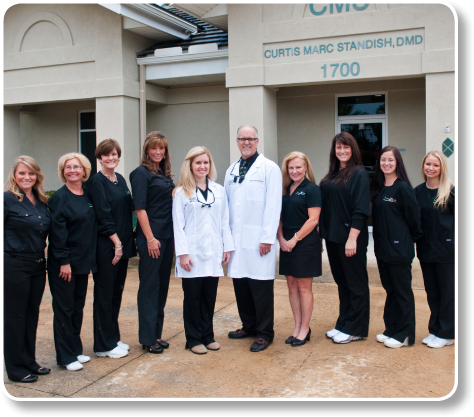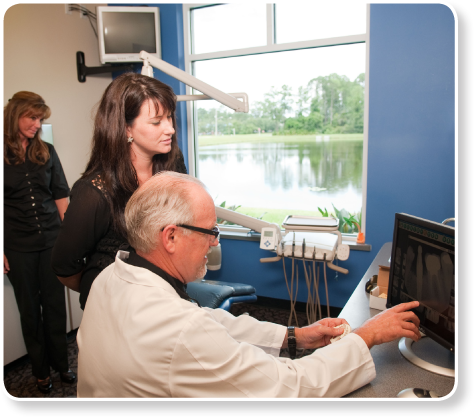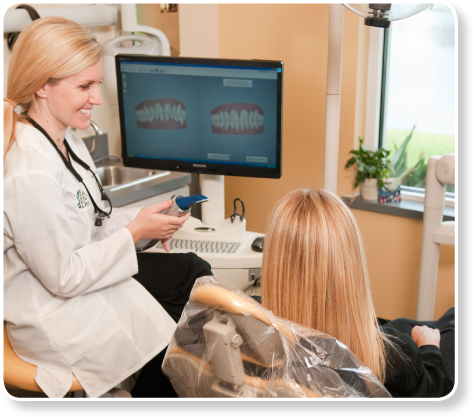Nano-Hydroxyapatite: Is It Safe for Your Family?

Nano-Medical Hydroxyapatite is showing up in toothpastes as an alternative to fluoride. It is a gold standard ingredient for oral health products in Japan known to combat tooth decay by remineralizing and repairing teeth. Researchers have even started testing its use in sports drinks in the hopes of tackling the rise in adolescent tooth decay due to the increased intake of acidic or sugary drinks.
But how safe is it? What studies have been conducted concerning its application and effectiveness as a substitute to fluoride and how can you decide if it’s safe for you or your family?
What Is Hydroxyapatite?
Hydroxyapatite is a biocompatible material naturally occurring in our bones, teeth, and saliva as a mineral form of calcium apatite. It is used by our saliva to remineralization our teeth, making up 97% of our tooth enamel, 70% of detine, and 60% of our bones. The synthetic version is called nano-hydroxyapatite (Nano-HAp). Shown to help remineralize and repair teeth and bones, it is used in the field of dentistry, orthopedics, and osteopathy, found in products, and used in treatments.
But where does it come from and how exactly does it remineralize or repair teeth?
Where Does It Come From?
The first medical application of hydroxyapatite was in 1970 by NASA for astronauts returning from their missions and the zero gravity environment of space. Experiencing significant loss in teeth and bone mass on return, hydroxyapatite was used as a biomedical treatment to help repair and remineralize both. Acquiring the patent from NASA in 1978, Sangi Co Ltd in Japan introduced the first commercial use of hydroxyapatite as the main ingredient for their enamel-restoration toothpaste, which is still sold today.2
Where Is Nano-HAp Found?
Due to its biocompatibility by being present in our bodies, medical and dental applications of Nano-HAp are prevalent. Its remineralizing capabilities provides growth and regenerations capabilities resulting in its use as a biomaterial ingredient in both medical and dental products and treatments.
Some products that use Hydroxyapatite include:
- Toothpaste
- Nutritional Supplements
- Medical Paste & Powder
- Dental Abrasive
Some treatments that use Hydroxyapatite include:
- Artificial Teeth and Bone
- Tissue Repair
- Orthopedic Implant Coatings to improve biocompatibility
- Protein-binding agent for Chromatography & Bacteria Culture
What Does the Toothpaste Taste Like?
Various flavors are available in toothpaste that contains Nano-HAp that mirror those of traditional fluoride flavors, such as the traditional spearmint. Children’s flavors are available such as “Watermelon,” “Bubblegum,” and “Berry” and are more subtle feature lower concentrations of Nano-HAp. The consensus from users has been there is no difference in flavor when compared to fluoride products although it is less harsh than fluoride. The biggest difference is not taste, but how it makes their teeth feel.
How Does Nano-HAp Feel on Your Teeth?
Going beyond what it tastes like, the real difference users state about using Nano-HAp over fluoride toothpaste is how it makes their teeth feel. Ask any users or search through the product review sections of Nano-HAp toothpaste and you will discover people stating it makes their teeth feel:
- Stronger
- Smoother
- Healthier
- Less sensitivity to hot or cold
Thinking and feeling something works is a start, but what is the sciences and research to prove or disprove what people are saying about Nano-HAp toothpaste?
Is It a Marketing Scheme or Does It Really Work?
Using Nano-HAp is said to help remineralize and repair teeth and bones, which in theory it seems to work. Hydroxyapatite remineralizes teeth by replacing lost minerals such as calcium and phosphates caused by high levels of acid or bacteria. Remineralization takes place when filling the microscopic cracks in our teeth created by tooth decay, and used in our saliva to do just that for our teeth. This is said to help repair teeth damaged by cavities while preventing cavities by breaking down first before it reaches tooth enamel. Bonding to proteins such as plaque or bacteria when brushing your teeth, hydroxyapatite is an antimicrobial agent and also tackles plaque, leading to the conclusion that it actually does what it says it is capable of doing.
How Does Nano-HAp Compare to Fluoride?
Fluoride has been a proven cornerstone for oral care since 1912. Products featuring Nano-HAp focus on restoring and remineralizes teeth, compared to fluoride working on remineralizing teeth via our salvia. In regard to protecting teeth prevent tooth decay, Nano-HAp is less resistant to acid than fluoride. Fluoride creates a dense zone of protection above whereas hydroxyapatite penetrates to the very bottom.
Considering users state it makes their teeth feel stronger, what research can back-up these claims? A research study published June 2011 in the Journal of Dentistry found “toothpaste(s) containing Nano-HAp revealed higher remineralizing effects compared to amine fluoride toothpastes”.3 This is backed by a study conducted 2016 published in the Indian Orthopedic Society Journal investigating remineralization of nano-hydroxyapatite toothpaste versus conventional fluoride toothpaste finding “Nano-HAp toothpaste (Aclaim and Apagard) on daily application will provide maximum protection against enamel demineralization in orthodontic patients when compared to fluoride toothpaste (Colgate Total)”.4
Further research reveals different findings with a separate study published 2018 in the Journal of Contemporary Dental Practice investigating remineralization (specifically for younger permanent teeth and with the inclusion of pH balancing) that found “there was no significant difference found between fluoride varnish group and Nano-HAp paste group.”5 This leads us to the conclusion that although a viable alternative to fluoride, research has not confirmed Nano-HAp products as superior but instead, recommended them over fluoride in certain situations.
Is Hydroxyapatite Safe?
Being a naturally occurring organic material within our bodies means it is biocompatible and safer than most other dental products or treatments on the market. This means it does not induce toxicity such as the issue of overexposure and ingestion of fluoride known as fluorosis nor inflammation when it is used to spur bone growth & tooth repair. Although rare allergic cases have been reported, the primary issues with Hydroxyapatite come into play when it is being taken as a supplement. Issues that can arise in this instance includes: headache or fatigue, dry mouth, frequent urination, flushing or sweating, and stomach discomfort.
Being a non-toxic and biocompatible material means it can be ingested, making it in many respects safer for human consumption over other dental products. Studies have been conducted around the world including a number in Japan by the Sangi Co LTD to demonstrate its effectiveness and safety with children. Majority of results indicated not only is it safe for children, but in some cases recommended. In the previous study referenced from the Journey of Contemporary Dental Practices it concluded: “Nano-HAp is a favoured alternative to fluoride specifically for patients requiring a lower fluoride concentration – such as children, pregnant women, or those at high risk of dental fluorosis.”5
What Are the Benefits?
If deciding to use products featuring Hydroxyapatite, there are a number of benefits. Its ability to stimulate bone growth, remineralization, and biocompatibility has made it a favoured ingredient in both dental and osteo products and treatments.
Some of the benefits from using Hydroxyapatite includes:
- Makes Teeth Whiter, Translucent, and Glossier
- Reduced Tooth Sensitivity and Pain Relief
- Antimicrobial & Fights Soft Tissue Infections (Fights Pathogens such as P Gingivalis & Candid)
- Helps fight and prevent cavities
- Remineralizes and repairs teeth
- Bonds bones
Recommendations for Use
When using toothpaste that has Nano-HAp, mouthwash or flossing should be done first as it is not recommended rinsing immediately after brushing your teeth. This allows time for the active ingredient Nano-HAp to penetrate and do its job. Heavy and long time coffee drinkers or smokers have indicated it helps whiten and brighten their teeth to reverse yellowing, making Nano-HAp toothpaste a good consideration if you find your teeth are looking transparent and want an alternative whitening option.
Key Takeaways
Products featuring Nano-HAp offer another way to remineralise and protect teeth aside from traditional fluoride products. With today’s families ingesting foods and beverages that are higher in sugar or acidity, the prevention of tooth decay is a critical challenge for dental professionals. Shown to be a comparable substitute for fluoride, research indicates that toothpaste containing Nano-HAp is safe for children and has been the gold standard in oral health in Japan for over 40 years.
Whether using toothpaste with fluoride or Nano-HAp, it is recommended to be used in conjunction with proper oral care habits such as avoiding certain food and beverages (high in sugar, starches, acid), brushing twice daily, mouthwash, flossing, and regular visits to your dentist. Consult your dentist about whether using products with Nano-HAp is right for your or your family, how to use them properly, and contact us directly as we’re happy to answer any questions to make oral care easy instead of a chore.
Next Steps to Achieving a Beautiful Smile
While following these dietary tips is a great step towards a healthy mouth, it’s just a part of the bigger picture. Be sure to follow other oral hygiene procedures such as brushing, flossing, and visiting your dentist every six months.
To schedule a check-up or cleaning, call us at 904-269-6558 or fill out our online form.
1 Pepla, Erlind. “Nano-Hydroxyapatite and Its Applications in Preventive, Restorative and Regenerative Dentistry: a Review of Literature.” Annali Di Stomatologia, 2014, doi:10.11138/ads/2014.5.3.108. Published in the US National Library of Medicine National Institutes of Health. Article from https://www.ncbi.nlm.nih.gov/pmc/articles/PMC4252862/
2 “What is Nano Medical Hydroxyapatite.” Nano Medical Hydroxyapatite | Oral Science, www.oralscience.com/en/ingredients/mhap/.
3 Peter Tschoppe, Daniela L. Zandim, PeterMartus, Andrej M.Kielbassa. Enamel and Dentine Remineralization by Nano-Hydroxyapatite Toothpastes: A comparative In vitro study. Journal of Dentistry 2011;Vol.39, Iss.06;430-437. Available from: https://www.sciencedirect.com/science/article/pii/S0300571211000832
4 Singh A, Shetty B, Mahesh C M, Reddy VP, Chandrashekar B S, Mahendra S. Evaluation of efficiency of two nanohydroxyapatite remineralizing agents with a hydroxyapatite and a conventional dentifrice: A comparative In vitro study. J Indian Orthod Soc [serial online] 2017;51:92-102. Available from: http://www.jios.in/text.asp?2017/51/2/92/204602
5 Y: Daas I, Badr S, Osman E. Comparison between Fluoride and Nano-hydroxyapatite in Remineralizing Initial Enamel Lesion: An in vitro Study. J Contemp Dent Pract 2018;19(3):306-312. Available from: http://www.jaypeejournals.com/eJournals/ShowText.aspx?ID=13404&Type=FREE&TYP=TOP&IN=_eJournals/images/JPLOGO.gif&IID=1044&Value=24&isPDF=YES
For informational purposes only.












